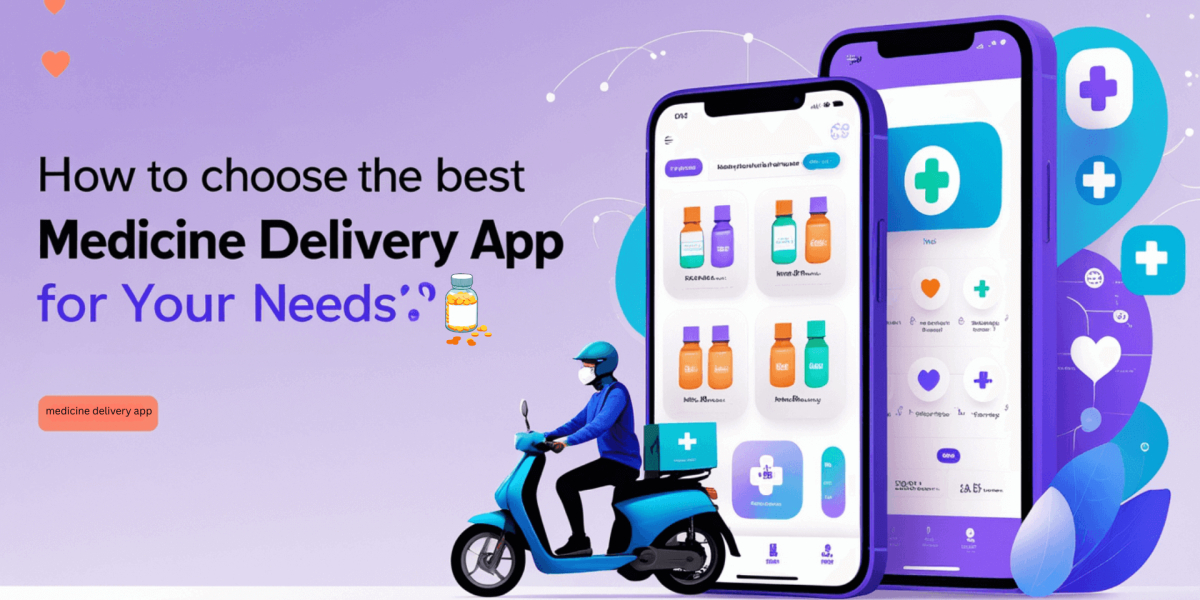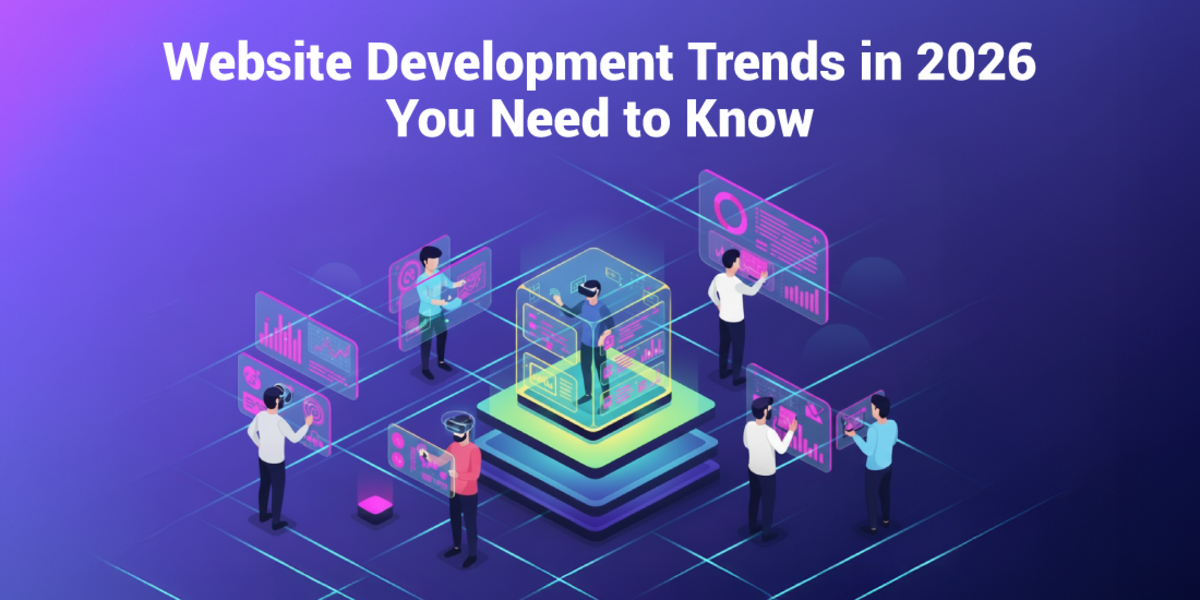Mobile App Development in 2024: Navigating the Future
- By Bhavik Koradiya
- 22-02-2024
- Mobile App Development

The landscape of mobile app development is in a constant state of evolution, marked by technological advancements, shifting consumer behaviors, and emerging trends. As we step into 2024, the mobile app industry continues to be a driving force behind digital innovation, catering to the diverse needs and preferences of users worldwide. In this comprehensive exploration, we delve deeper into the current state of mobile app development, analyze the prevailing trends shaping the industry, and outline strategies to successfully navigate the future.
The Current Landscape of Mobile App Development:
The proliferation of smartphones and the widespread adoption of mobile technology have fueled the exponential growth of the mobile app ecosystem. From social networking and entertainment to e-commerce and productivity, mobile apps have become an integral part of modern life, offering convenience, connectivity, and utility at our fingertips.
In 2024, the mobile app marketplace will be more competitive and dynamic than ever before. With millions of apps vying for users' attention across various platforms, developers face the challenge of creating unique, engaging experiences that resonate with their target audience. Moreover, as consumer expectations continue to evolve, developers must prioritize factors such as performance, security, and user experience to maintain a competitive edge in the market.
I. Rise of Progressive Web Apps (PWAs): Bridging Gaps for Enhanced User Experiences
a) What are PWAs?
Progressive Web Apps (PWAs) have gained traction as a versatile solution, providing a seamless blend of web and mobile app experiences. With offline capabilities, push notifications, and responsive design, PWAs bridge the gap between traditional websites and native mobile apps.
b) Benefits for Developers
Developers appreciate PWAs for their cross-platform compatibility, reducing the need for separate development for iOS and Android. This approach streamlines the development process, saving time and resources while ensuring a consistent user experience.
II. Challenges in the Current Mobile App Development Landscape:
a) Security Concerns Persist
As the reliance on mobile apps continues to grow, so do security threats. Developers face the challenge of safeguarding sensitive user data from cyber threats, necessitating robust security measures, including encryption, secure authentication, and regular security audits.
b) Fragmentation and Its Impact
The diverse mobile ecosystem, encompassing various devices, screen sizes, and operating systems, poses a significant challenge. Developers must employ effective testing and optimization strategies to deliver a cohesive user experience across platforms.
III. Tapping into Wearable Technology: Opportunities for Innovation
a) The Integration of Wearables
Wearable technology, from smartwatches to fitness trackers, has become an integral part of the tech landscape. Mobile app developers can capitalize on this trend by creating applications that seamlessly integrate with wearable devices, enhancing user engagement and functionality.
b) Health and Wellness Apps on the Rise
The health and wellness industry has seen a surge in mobile app development. Applications focusing on fitness tracking, mental health, and personalized wellness plans are gaining popularity, presenting lucrative opportunities for developers.
IV. The Impact of 5G Technology: Revolutionizing Connectivity
a) Unleashing Faster Speeds
The rollout of 5G technology is a game-changer for mobile app developers. With significantly faster speeds and lower latency, developers can create more immersive and data-intensive applications, including augmented reality (AR) and virtual reality (VR) experiences.
b) Enhanced Connectivity for IoT Integration
The Internet of Things (IoT) relies on robust connectivity, and 5G provides the necessary infrastructure. This opens up new possibilities for mobile apps to seamlessly integrate with IoT devices, creating a more interconnected digital experience.
V. The Role of Artificial Intelligence (AI) in Mobile App Development:
a) Personalization and Predictive Analytics
AI continues to play a pivotal role in shaping the future of mobile apps. From personalized user experiences to predictive analytics, integrating AI enhances app functionality and provides valuable insights into user behavior.
b) Chatbots and Virtual Assistants
The use of chatbots and virtual assistants powered by AI is becoming commonplace in mobile apps. These features enhance user interaction, provide instant support, and contribute to a more engaging user experience.
Mobile App Development Trends in 2024:
To stay ahead of the curve, developers need to stay abreast of the latest trends and innovations shaping the mobile app landscape. Here are some key trends driving mobile app development in 2024:
AI and Machine Learning Integration:
Artificial intelligence (AI) and machine learning (ML) have emerged as powerful tools for enhancing app functionality and personalizing user experiences. In 2024, we can expect to see an increased emphasis on AI-driven features such as predictive analytics, chatbots, and virtual assistants, which can help streamline processes, automate tasks, and deliver tailored recommendations to users.
Advantages:
Improved Personalization: AI-powered algorithms analyze user data to deliver personalized recommendations and content, enhancing user engagement and satisfaction.
Enhanced Efficiency: Automation of repetitive tasks through AI and ML algorithms allows for more efficient app operation, freeing up developers to focus on innovation and optimization.
Predictive Analytics: AI-driven predictive analytics help businesses anticipate user needs and behaviors, enabling proactive decision-making and targeted marketing strategies.
Augmented Reality (AR) and Virtual Reality (VR):
AR and VR technologies continue to push the boundaries of what's possible in mobile app development, offering immersive, interactive experiences across gaming, education, retail, and more. In 2024, we anticipate a surge in AR and VR applications, driven by advancements in hardware, software, and content creation tools that make it easier for developers to create compelling, lifelike experiences for users.
Advantages:
Enhanced User Engagement: AR and VR experiences captivate users' attention and create memorable interactions, leading to increased user engagement and retention.
Immersive Brand Experiences: Businesses can leverage AR and VR to create immersive brand experiences, allowing users to visualize products and services in real-world contexts.
Innovative Training Solutions: AR and VR technologies are increasingly used for employee training and education, providing realistic simulations and interactive learning experiences.
Internet of Things (IoT) Integration:
The Internet of Things (IoT) is revolutionizing the way we interact with the world around us, enabling seamless communication between connected devices and systems. In the realm of mobile app development, IoT integration opens up a myriad of possibilities, from smart home automation and wearable technology to industrial applications and healthcare solutions.
Advantages:
Enhanced Connectivity: IoT-enabled mobile apps facilitate seamless communication between connected devices, enabling users to control and monitor their smart home devices, vehicles, and appliances remotely.
Improved Efficiency: IoT integration streamlines processes and automates tasks, leading to increased efficiency and productivity in various domains, such as manufacturing, healthcare, and agriculture.
Data-driven Insights: IoT sensors collect valuable data on device performance, user behavior, and environmental conditions, providing businesses with actionable insights for optimization and decision-making.
Cross-Platform Development:
With users accessing apps across a multitude of devices and platforms, cross-platform development has become increasingly important for reaching a wider audience and maximizing market reach. Frameworks like React Native, Flutter, and Xamarin allow developers to build high-quality, native-like apps that run smoothly on both iOS and Android devices, reducing development time and costs.
Advantages:
Cost Efficiency: Cross-platform development reduces the need for separate codebases and development teams for iOS and Android, resulting in cost savings for businesses.
Faster Time-to-Market: Cross-platform frameworks enable rapid development and deployment of apps across multiple platforms, allowing businesses to capitalize on market opportunities more quickly.
Consistent User Experience: Cross-platform apps maintain a consistent look and feel across different devices and platforms, enhancing brand identity and user satisfaction.
Progressive Web Apps (PWAs):
Progressive web apps offer a compelling alternative to traditional native apps, providing users with fast, reliable experiences that can be accessed directly from the web browser. In 2024, we can expect to see a growing adoption of PWAs, particularly among businesses looking to enhance their online presence and deliver seamless experiences across desktop and mobile devices.
Advantages:
Accessibility: PWAs are accessible via web browsers, eliminating the need for users to download and install apps from app stores, resulting in greater reach and accessibility.
Offline Functionality: PWAs can work offline or with limited connectivity, allowing users to access content and features even in areas with poor network coverage.
Improved Performance: PWAs leverage modern web technologies to deliver fast loading times and smooth performance, providing a superior user experience compared to traditional websites.
Challenges in Mobile App Development:
a) Security Concerns: Safeguarding Your App in the Cyber Age
Security stands as a paramount challenge for mobile app developers in the face of the growing number of cyber threats. From data breaches to malware attacks, the stakes are higher than ever. Developers need to implement robust security measures at every stage of app development to ensure the confidentiality and integrity of user data.
b) Fragmentation Woes: Tackling Diversity in the Mobile Ecosystem
The fragmentation of the mobile ecosystem, encompassing various device types, screen sizes, and operating systems, poses a significant hurdle. Developers aiming for consistent user experiences across platforms must deploy effective testing and optimization strategies. This ensures seamless performance and functionality, irrespective of the diverse mobile landscape.
c) User Privacy: Building Trust in the Age of Regulations
Stricter regulations like GDPR and CCPA underscore the importance of prioritizing user privacy in mobile app development. Developers must go beyond the basics, implementing comprehensive data protection measures, obtaining user consent transparently, and adhering to privacy best practices. Building trust with users is essential for the long-term success of any mobile application.
Innovations Shaping the Future:
a) AI Integration: Transformative Power for Mobile Apps
The integration of Artificial Intelligence (AI) is reshaping the future of mobile app development. From personalized user experiences to predictive analytics, AI offers a myriad of possibilities. Developers should explore incorporating AI capabilities into their apps to enhance functionality and stay ahead in the competitive landscape.
b) 5G Revolution: Unleashing Speed and Connectivity
The advent of 5G technology is set to revolutionize the mobile app experience. With unparalleled speed and connectivity, developers can create more immersive and dynamic applications. Embracing 5G opens new avenues for innovation, such as augmented reality (AR) and virtual reality (VR) integration, transforming the way users interact with mobile apps.
Agile Development: Adapting to Change Effectively
a) Embracing Agile Methodologies: Flexibility for Success
Agile methodologies provide the flexibility needed to adapt to the dynamic nature of the mobile app development landscape. Developers should prioritize iterative development, frequent testing, and collaboration to streamline the development process. This approach enables quick responses to changing requirements and ensures the delivery of high-quality, user-friendly apps.
User-Centric Design: The Heart of Mobile App Success
a) User-Centered Development: Crafting Intuitive Experiences
User-centric design is not a trend; it's a necessity for mobile app success. Developers must prioritize understanding user needs and behaviors, creating intuitive and seamless experiences. Conducting user feedback sessions, usability testing, and continuously iterating based on user insights are crucial aspects of user-centric design.
The Future Landscape: Opportunities and Trends
a) IoT Integration: Expanding Horizons for Mobile Apps
The Internet of Things (IoT) presents exciting opportunities for mobile app developers. Integrating apps with IoT devices opens new possibilities, from smart homes to wearable technology. Developers should explore innovative ways to leverage IoT, creating applications that seamlessly integrate into the interconnected fabric of the digital world.
b) Cross-Platform Development: Bridging Gaps for a Unified Experience
Addressing the challenge of fragmentation, cross-platform development frameworks offer a solution. Developers can leverage tools like React Native or Flutter to create applications that work seamlessly across different devices and operating systems. This approach streamlines development efforts and ensures a unified experience for users.
Embrace Emerging Technologies:
Stay informed about the latest advancements in AI, AR, VR, IoT, and other emerging technologies, and explore how they can be leveraged to enhance your app's functionality and user experience. Experiment with new tools, frameworks, and SDKs to stay ahead of the curve and differentiate your app in the marketplace.
Prioritize User Experience (UX) and Design:
User experience (UX) is paramount in determining the success of a mobile app. Invest in intuitive design, smooth navigation, and engaging content to create memorable experiences that keep users coming back for more. Conduct user testing, gather feedback, and iterate based on user input to continuously improve your app's UX.
Focus on Performance and Optimization:
Optimize your app for speed, performance, and reliability across different devices, platforms, and network conditions. Minimize loading times, reduce app size, and prioritize essential features to ensure a seamless user experience. Regularly monitor and optimize your app's performance using tools like Google Lighthouse and Firebase Performance Monitoring to maintain high ratings and user satisfaction.
Leverage Data and Analytics:
Harness the power of data and analytics to gain insights into user behavior, preferences, and trends. Use data-driven decision-making to refine your app's features, personalize content, and drive user engagement. Continuously monitor key metrics and KPIs to track the success of your app and identify areas for improvement.
Stay Agile and Iterative:
Adopt an agile development approach that allows for flexibility, adaptability, and continuous iteration. Break down development tasks into smaller sprints, gather feedback early and often, and iterate based on user input and market dynamics. Embrace a culture of innovation and experimentation to drive ongoing improvement and innovation.
Conclusion:
Mobile app development in 2024 is characterized by rapid innovation, emerging technologies, and evolving user expectations. By embracing trends such as AI, AR, VR, IoT, and cross-platform development, prioritizing user experience and design, and adopting an agile, data-driven approach, developers can navigate the future successfully and create apps that resonate with users in an ever-changing digital landscape. As we continue to push the boundaries of what's possible, the future of mobile app development holds boundless opportunities for creativity, innovation, and impact. developers can position themselves for success in the dynamic and competitive landscape.


.jpg)


